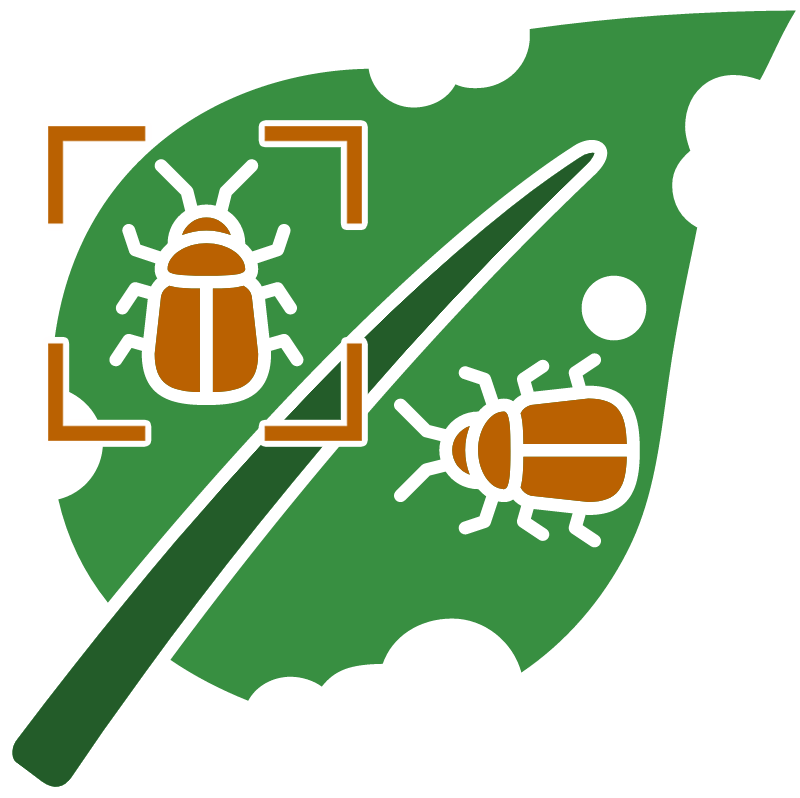Cabbage aphid (Brevicoryne brassicae)
Biology and life history: Cabbage aphid is an anholocyclic (no sexual phase; permanently parthenogenetic) aphid that feeds on a wide range of species within the plant family Brassicaceae (mustard group). It is native to Europe but now occurs worldwide. The aphid is green but visually distinctive because all stages are covered with white waxy crystals giving colonies a grayish appearance. Both winged and nonwinged forms occur. Cabbage aphid does not have a woody winter host but feeds on herbaceous hosts year-round.
Host plants and crop damage: The aphid has a wide host range within Brassicaceae, which includes virtually all cultivated crucifer vegetables, mustards, Canola and rapeseed. Like all aphids, cabbage aphid feeds by inserting its stylets into phloem tissue and removing the sap. Sufficiently large populations can be damaging, reducing crop biomass and yield. Dense populations can thickly cover stems, leaves and flowers. Their large, unsightly infestations are cosmetic injury on fresh market crucifer vegetables. Cabbage aphid is not known to transmit viruses.
Management: The aphid is attacked by several predatory insects, parasitic wasps, and entomopathogenic fungi, although its waxy coating provides some defense against these natural enemies. Insecticides are registered for its control and are effective. Fall sown Canola is relatively tolerant to cabbage aphid infestations in the fall.

